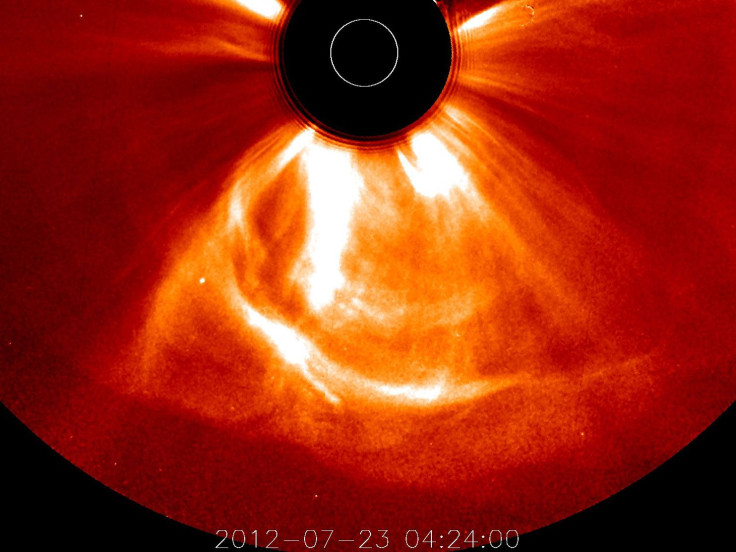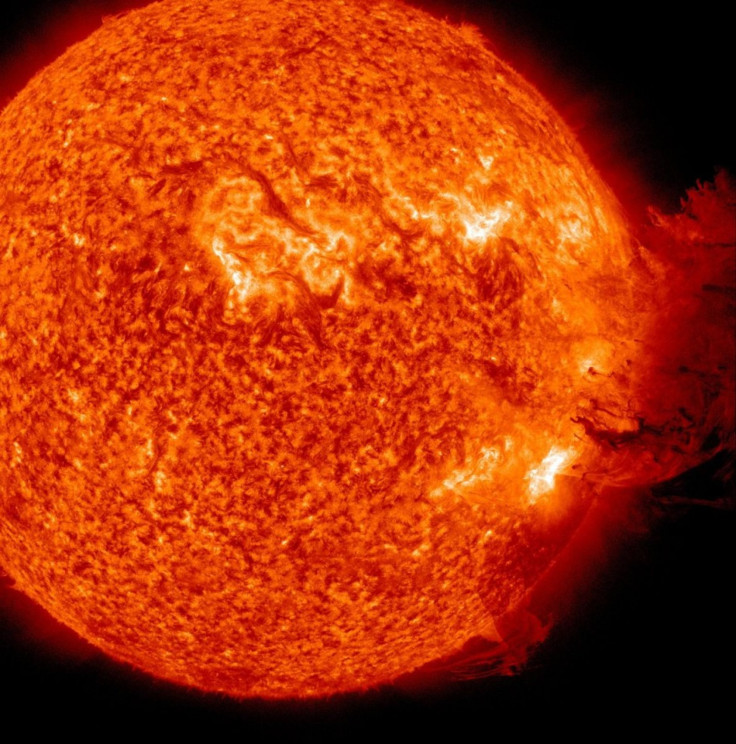‘Perfect’ Solar Storm Of 2012 Missed Earth But Could Have Led To A Once-In-A-Lifetime Event, $2 Trillion In Costs [VIDEO]
A solar storm 2012 just missed Earth but the event had all the elements to create a truly spectacular event on our planet. In July 2012, the Sun throw out two coronal mass ejections (CME) within a 10 minute timeframe with the latter traveling at 1,800 miles per second, the fastest ever recorded for a CME by NASA’s Solar Terrestrial Relations Observatory (STEREO), reports NASA.

CMEs send out massive amounts of solar particles into space. When the particles hit Earth it could lead to geomagnetic storms that can cause radio blackouts, affect satellites and even the power grid.
The two CMEs were captured by the two nearly identical spacecraft that make up STEREO. According to the researchers the event was a “perfect storm” as the first CME cleared the way for the second CME, creating an express lane for the solar particles to travel on. An earlier CME, which occurred on July 18, had cleared the way for the two later CMEs.
In addition to the STEREO data the Solar and Heliospheric Observatory (SOHO), a joint partnership between NASA and the European Space Agency, also observed the CMEs.
Joe Gurman, project scientist for STEREO, said in a statement, “The interactions between successive coronal mass ejections farther out in interplanetary space need to be considered as well.”

The one-two CME punch would have done some serious damage if it hit Earth. According to the University of California Berkeley, if the CMEs happened on July 13 it could have knocked off the power grid in some areas, disabled satellites, widespread radio blackouts and affected spacecraft orbiting Earth.
According to the researchers, the potential geomagnetic storm would resemble the Carrington event, the largest magnetic storm in history. In 1859, CME associated with a solar flare created a massive geomagnetic storm that knocked out the telegraph system throughout the United States while aurorae could be seen as far south as Cuba and Hawaii, reports NASA. If a similar event happened in 2014 it would have a total economic impact of $2 trillion.

Ying D. Liu, from the National Space Science Center of the Chinese Academy of Sciences, said in a statement, “The cost of an extreme space weather event, if it hits Earth, could reach trillions of dollars with a potential recovery time of 4-10 years. Therefore, it is paramount to the security and economic interest of the modern society to understand solar superstorms.”
Each CME releases energy equivalent to a “billion hydrogen bombs,” notes the UCB press release. While the direct hit would have been bad enough, the CMEs created a “southward-orientated magnetic field” that, when interacting with Earth’s northward-orientated magnetic field, would have led to a process known as magnetic reconnection, the rearrangement of a magnetic field. Magnetic reconnection would increase the power of a solar storm and cause even more damage to the electrical grid, radios and satellites.
Earlier in the year a CME associated with an X-class solar flare on Jan. 7 delayed the Orbital Sciences’ International Space Station Commercial Resupply Services Mission launch. The company scrubbed the launch due to an increase in space radiation above the safety threshold.
According to NASA, the observations from the three spacecraft created a 3D model of the event. For researchers, that information can be used to improve simulation models and space weather forecasts which would lead to better predictions of a superstorm. The research was published in the journal Nature Communications.
© Copyright IBTimes 2025. All rights reserved.






















